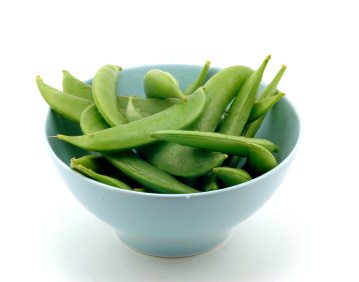By Jill Nussinow, M.S., R.D.
Whether you choose to avoid animal milk because you are following a vegan diet, or you are lactose intolerant, have allergies, wish to avoid cholesterol, or dislike dairy products, there has never been more choice in non-dairy "milks."
Although commercial soy milk, first imported from Japan, has been available in the U.S. for the past 15 years, only in the last five or so has the competition increased exponentially. Then, four years ago the first rice drink was introduced in the marketplace. Since then, the proliferation of alternatives has made choosing a "milk" more difficult.
There are differences in nutrition content, consistency, price, and most of all taste, which is often the determining factor in making one's choice. Jennifer Raymond, author of The Peaceful Palate Cookbook, reports that often someone will try one brand, dislike the taste, and decide that a milk alternative is not for them. She says, "People need to try many different brands, as they all taste different." Raymond recommends that you continue to try brands until you find one you like.
You can buy every imaginable type of milk alternative, with choices like almond, soy, rice, rice-soy blend, and tofu, in different flavors and with varying degrees of fat and enrichment. They come in powders, liquids, and liquid concentrates in sizes from snack packs to bulk, although most are liquids in quart or liter containers. They can be found plain, unsweetened or sweetened, or containing flavorings such as vanilla, chocolate, or carob.
A healthier alternative to any animal milk in many respects, many dairy alternatives are produced from organic grains or beans. They may be used as a beverage or snack or in cooking and baking.
Saying that you can substitute these beverages for animal milk in any recipe would be misleading. There are at least four areas to consider when choosing which drink will work best. 1) What type of heating will you be doing, if any? Will you be baking or cooking, and at what temperature level? 2) What is the purpose of adding the drink? Is it for liquid or for flavor? 3) What is the taste and flavor that you need from this product? Will what you choose complement the other ingredients in your recipe? For example, you would not want to use a vanilla-flavored drink in most savory recipes. Or are you seeking a neutral flavor more like cow's milk? 4) What consistency or texture are you seeking? How much fat do you want or need? Do you want to add depth or body?
There are no easy answers to these questions but there are some general rules to keep in mind when using these products. Raymond says, "I tend to use soy milk when I want something thick and creamy. It thickens better than rice milk. If I want a true milk flavor I use rice milk." (Better Than Milk, by Sovex also has a milk-like flavor.)
The biggest complaint with the soy beverages is that they tend to curdle at high temperatures and with the addition of acidic foods. Eric Tucker, the head chef at the highly acclaimed Millenium restaurant in San Francisco says, "I prefer rice milk as it has lighter flavors, although it is a bit sweeter. Also, soy milk tends to curdle when exposed to high heat."
Soy milk tends to be heartier even if it is harder to use. It lends a thicker, richer texture especially to recipes like sauces, gravies, and soups.
Almond milk works much like rice milk in cooking and seems better suited to sweeter dishes such as curries or desserts. Rice drinks work well in lighter cream-type soups, and especially when using the vanilla- flavored variety in desserts.
Remember that not all brands taste the same, and personal preference and availability will most likely affect your choice. Personally, I like to use a rice-soy blend as my mainstay for cooking. It doesn't seem to curdle as easily as pure soy and has the milder flavor components of rice drinks.
Since most of the drinks come either in aseptic packages or powder, they are easily stored and kept on hand for emergencies. The aseptic cartons keep the drinks fresh for up to one year without refrigeration. Once opened, the drinks will stay fresh in a cold (under 40 degrees Fahrenheit) refrigerator from 3 to 7 days. Always shake the cartons before using. Soy beverage manufacturers do not recommend freezing.
I have successfully frozen a number of rice beverages for a month or more without any deterioration of texture or flavor. It's best to freeze the drink in a portion size that you are likely to use. If used only in your tea for example, freeze in ice cube trays, pop out the frozen cubes, and store in freezer bags. Defrost as needed.
Of the powders, Solait, a soy drink by Devansoy is shelf stable for up to one and a half years, and Better Than Milk, a tofu-based drink by Sovex, lasts at least 6 months. Solait may also be used as a substitute for dry milk in baking. Richard Martin, sales manager for Sovex, recommends experimenting with the Better Than Milk powder, as results when baking are inconsistent.
Luckily, as these "milks" have become more widely available and are now often found in supermarkets, the number of recipes using them has also increased. When converting older recipes calling for dairy milk, always strive for consistency in flavorings, using sweeter products for desserts and plain or unsweetened milks in savory recipes. Experimentation is often the best teacher.
Copyright 1996 by The Vegetarian Resource Group.
 Place the sugar snap peas in a small steamer basket, and place the basket in a pot with a tightly fitting lid, above an inch of boiling water.
Place the sugar snap peas in a small steamer basket, and place the basket in a pot with a tightly fitting lid, above an inch of boiling water. 








